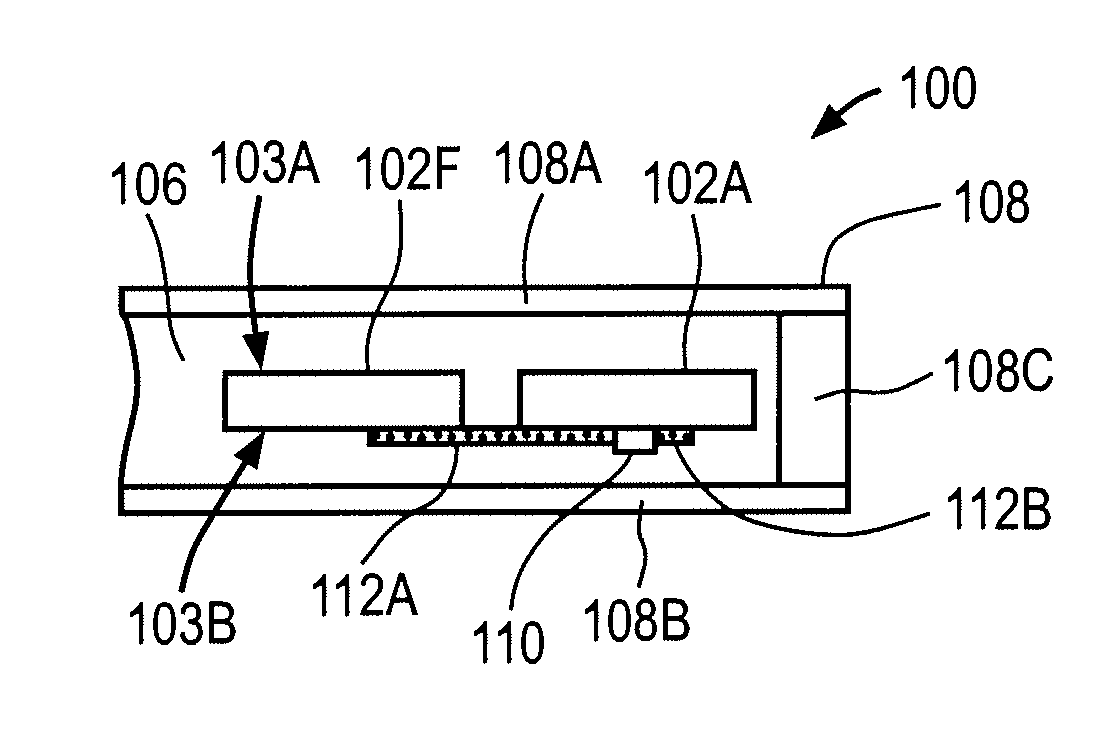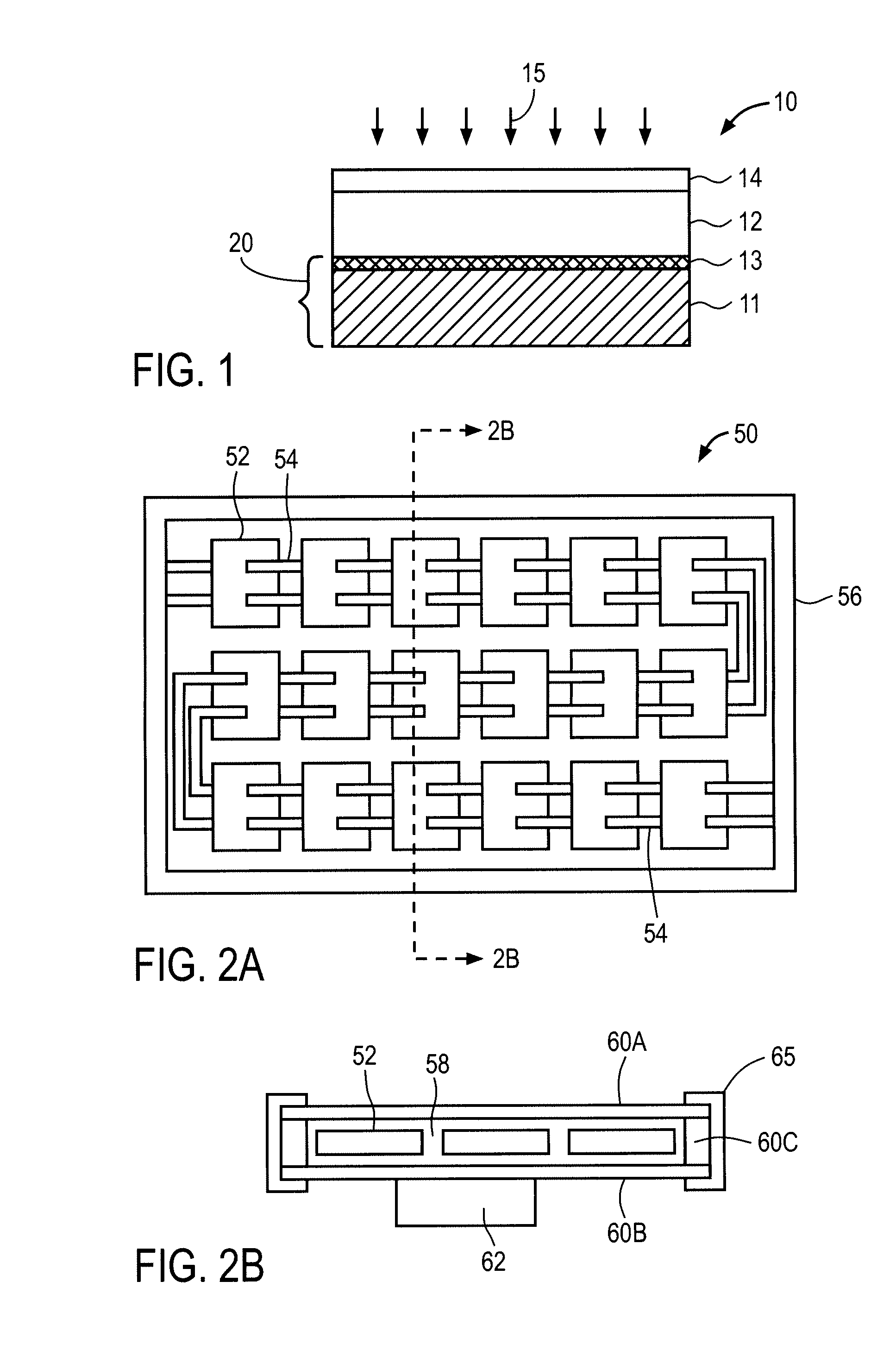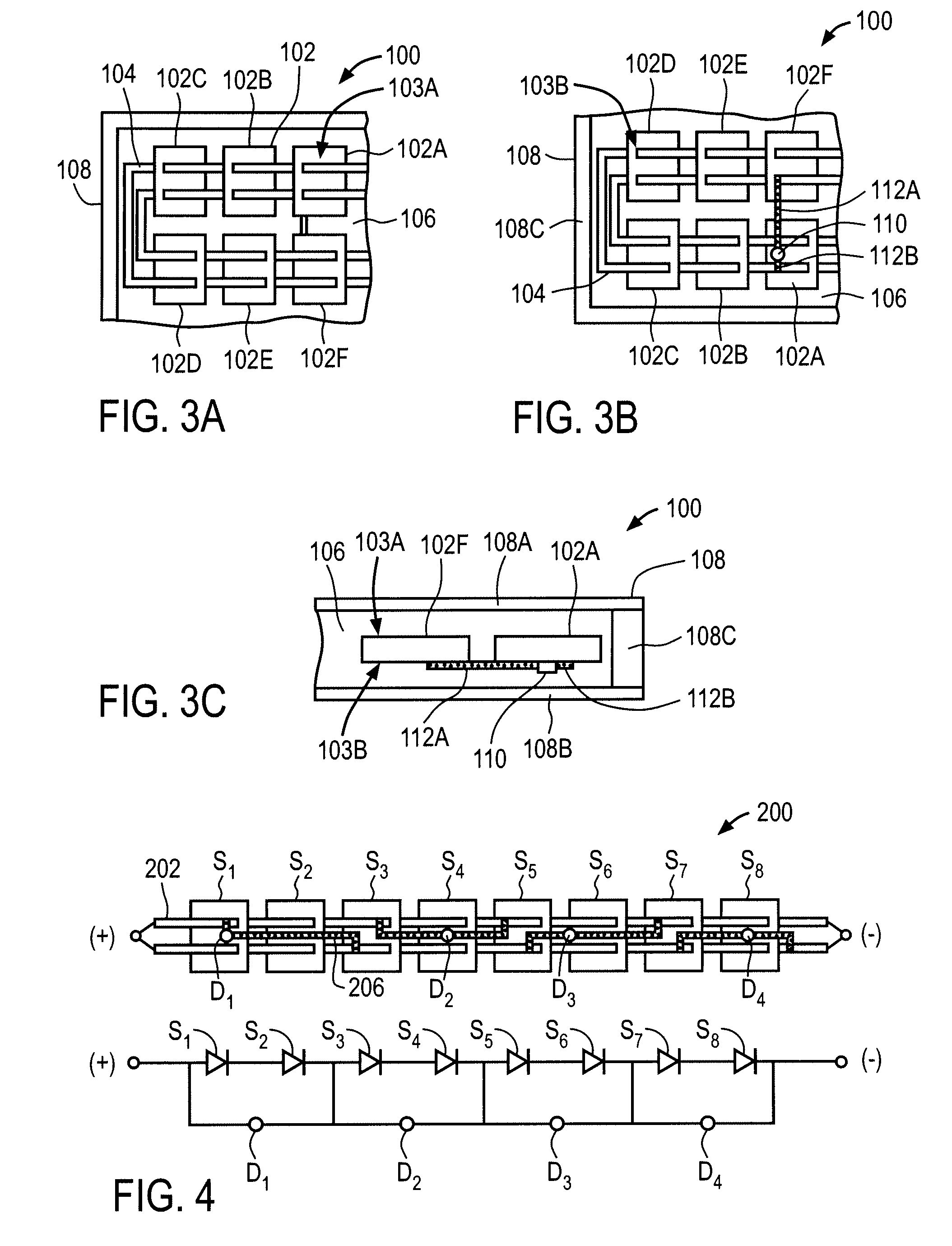Thin film photovoltaic module manufacturing methods and structures
a technology of photovoltaic modules and manufacturing methods, applied in the direction of photovoltaics, electrical equipment, semiconductor devices, etc., can solve the problems of insufficient moisture barrier characteristics of si-based module edge seals, high cost of electricity generated by silicon-based solar cells, and high cost of electricity generated by more traditional methods. to achieve the effect of reducing the effective series resistance of devices
- Summary
- Abstract
- Description
- Claims
- Application Information
AI Technical Summary
Benefits of technology
Problems solved by technology
Method used
Image
Examples
example 1
Adding Bypass Diodes to Already Formed Strings
[0036]In this approach, the solar cell strings, each having two or more solar cells, are first manufactured using various known methods and equipment. Tools that place solar cells, cut pieces of ribbons, and place pieces of ribbons in a way that form a solar cell string are designed and marketed by many companies such as GT-Solar and Spire of the USA. During stringing, the (+) terminal of a solar cell is connected to the (−) terminal of the adjacent solar cell, typically by one or more copper ribbon pieces. In cells with (+) and (−) terminals on two opposite sides (top and bottom sides) of the device, copper ribbon(s) are electrically connected to the top side or surface of one cell and to the bottom side or surface of the adjacent cell. In device structures where both (+) and (−) terminals are on the back or the bottom side of the solar cells, ribbons connect adjacent cells only on their back surfaces. In any case, typical cell strings ...
example 2
Adding Bypass Diodes During Stringing of Solar Cells
[0042]In this approach, as the solar cell strings, each having two or more solar cells, are manufactured, the bypass diode devices are integrated into the forming solar cell strings before the strings move to the lay-up station. In an example there is formed a five cell string with a bypass diode across four of the cells, where all electrical connections are made using a conductive adhesive. FIG. 7 shows an exemplary process flow for such a process. In a first step of the process flow (see FIG. 7-A) a bypass diode device 700 with an active diode D in region 701 and leads 702 is placed on a surface. The bypass diode device 700 may, for example, be cut from a diode ribbon such as the one depicted in FIG. 6D. The bypass diode device 700 may have an electrically insulated region 703 and two electrically conducting regions 704. A first conductive ribbon 705A is also placed on the surface. First conductive adhesive patches 706A are appli...
PUM
 Login to View More
Login to View More Abstract
Description
Claims
Application Information
 Login to View More
Login to View More - R&D
- Intellectual Property
- Life Sciences
- Materials
- Tech Scout
- Unparalleled Data Quality
- Higher Quality Content
- 60% Fewer Hallucinations
Browse by: Latest US Patents, China's latest patents, Technical Efficacy Thesaurus, Application Domain, Technology Topic, Popular Technical Reports.
© 2025 PatSnap. All rights reserved.Legal|Privacy policy|Modern Slavery Act Transparency Statement|Sitemap|About US| Contact US: help@patsnap.com



